HandsOn Guide to Setting Up and Using Open Goal Lacrosse EquipmentHandsOn Guide to Setting Up and Using Open Goal Lacrosse Equipment
Unboxing and Assembling the Open Goal Lacrosse Frame
When you first receive your open goal lacrosse equipment, you’ll need to unpack all the parts and assemble the frame. This crucial first step sets the foundation for your training goals.
Start by carefully removing each component from the packaging. Layout all the tubes, brackets, bolts, and fasteners so you can take inventory. Double check you have all the required pieces before beginning assembly.
Most open goal frames utilize t-shaped brackets to connect the vertical poles to the top and bottom horizontal crossbars. Start by laying the crossbars on the ground and inserting the vertical poles into the t-joints. You may need a rubber mallet to tap the poles firmly into place.
With the frame loosely fitted together, insert the bolts through the brackets and fasten them snugly, but not overly tight. You’ll want to leave some wiggle room to make adjustments during net installation. Use the provided wrenches to bolt on any additional stabilizer bars that fortify the frame.
If your open goal frame includes a rebounder, spend some time reading the instructions for proper setup. Getting the rebounder height and angle right is key for effective practice. You’ll usually need special attachment brackets and tension cords to mount the rebounder net.
Before moving on to net installation, take a minute to ensure your open goal frame is square and stable. Check diagonal measurements to make sure the poles align properly at 90 degree angles. The last thing you want is a rickety goal that collapses during action!
With the open goal frame assembled, you’re ready to attach the netting and fine tune the setup. Just take your time during construction and don’t rush through the steps. Building a solid foundation will pay dividends when you start putting your new open goal lacrosse training equipment to work on the field!
Adjusting the Net Tension and Attaching Rebounder
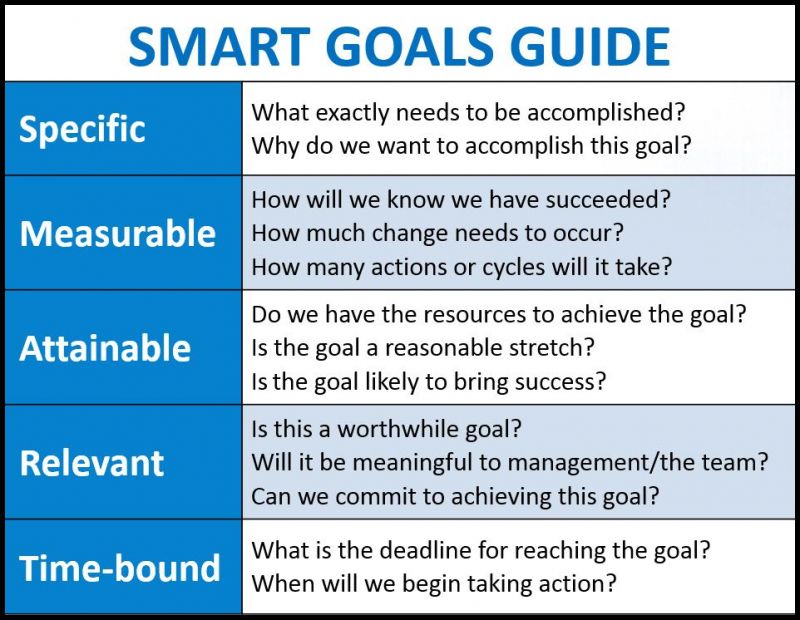
Proper net tension is imperative for achieving peak performance from your open goal lacrosse setup. A net that’s too loose won’t rebound shots consistently, while over-tightening can put too much strain on the frame. Finding the ideal tension comes down to a balance of experience and experimentation.
Start by loosely attaching the netting to each pole using the provided fasteners. Gradually tighten each connection point little by little, working your way around the goal frame. After getting each point hand-tight, use a ratchet to fine tune the tension. Applying even pressure is the goal, so make small adjustments and recheck until satisfied.
As you tighten the net, give it a shake to see how much give it has. A good rule of thumb is allowing 6 inches of slack. This gives the net enough tautness to rebound shots, while still absorbing impact. Don’t rely on visual inspection alone – toss in a few balls to test impact absorption and responsiveness.
Finding the right tension also depends on your rebounder setup. Attach the rebounder net to the main goal net per the manufacturer instructions. Make sure the rebounder bungee cords have enough give to function properly. If you notice the rebounder net sagging, give the main goal net an extra round of tightening to improve its rebounding action.
Be prepared to periodically re-tighten and adjust your netting. The repeated impact from shots will cause the lacrosse net to lose tension over time. Get in the habit of checking tension before each practice session. Carry a ratchet in your equipment bag for quick tensioning on the field.
With your net tuned and rebounder securely integrated, you’re ready to dive into drills. But don’t overlook this important setup step. Achieving that dialed-in net response will pay dividends as your skills progress. Take time to experiment with different tension levels and rebounder placements until you find your open goal’s sweet spot.
Tips for Finding the Perfect Location to Set Up Your Open Goal
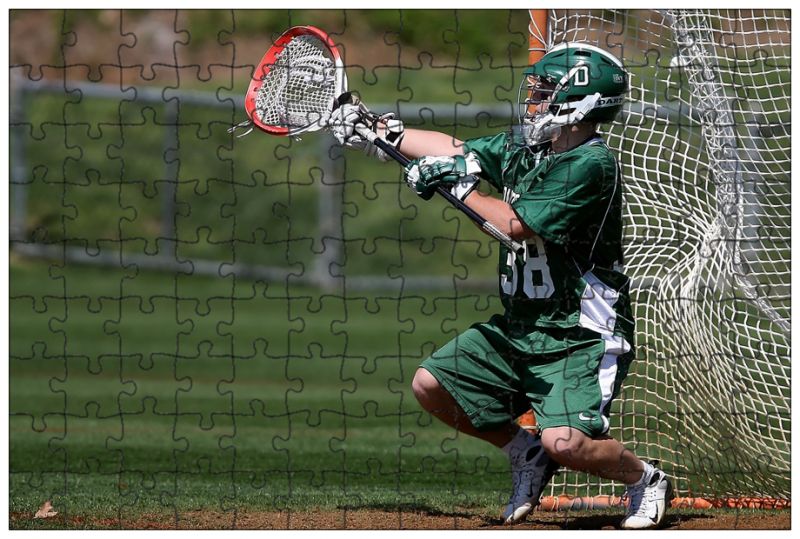
Determining the optimal location for your open goal lacrosse setup takes some planning. Beyond just having adequate space, you’ll want to consider ground surface, sunlight, and safety implications.
Start by measuring the footprint of your assembled open goal frame. Be sure to leave ample margin around the goal, no less than 6 feet. More space is better for maneuvers and running drills. Survey the area for obstructions like trees, fences, or power lines that could interfere.
The ground surface material plays a key role. For in-home use, a flat driveway or patio is ideal. The smooth concrete minimizes friction and erratic ball bounces. Grass works too, but may slow ground balls. Avoid uneven gravel or dirt areas that can trip up players.
Proper lighting is also imperative. Position your open goal so the sun doesn’t shine in players’ eyes. Glare and shadows can make tracking balls difficult. North-facing orientations are best for even illumination on the field. Supplement sunlight with portable field lights for evening practice sessions.
Safety should be a top consideration. Keep the open goal away from breakable windows on the house. Never position it facing a street or sidewalk where errant shots could hit cars or people. Use backstops or safety netting to contain wild throws and passes.
Portable open goals offer flexibility to reposition based on sun angles and exercises. Roll the frame to alternate shooting perspectives. Just be sure to secure it in place with sandbags or stakes when in use. Nothing ruins a great practice like runaway equipment!
With ample space, smart positioning, and safety preparations, you can install your open goal lacrosse setup for success. Don’t neglect location planning, as the right placement will support your skills progression. Dial in the perfect spot tailored to your practice needs.
Safety Considerations When Using Open Goal Lacrosse Equipment
- Lay out all tubes, brackets, bolts, and fasteners
- Cross-reference with the provided parts list
- Organize components by type for easy access during assembly
Frame Assembly Process
With all parts accounted for, you can begin the assembly process. Most open goal frames utilize a similar construction method:
- Connect vertical poles to horizontal crossbars using T-shaped brackets
- Insert bolts through brackets, leaving them slightly loose for adjustments
- Attach any additional stabilizer bars to reinforce the frame
- Use a level to ensure the frame is square and adjust as needed
- Tighten all bolts securely once the frame is properly aligned
Can you assemble an open goal lacrosse frame without professional help. In most cases, yes. The design of these frames is typically user-friendly, allowing for DIY assembly with basic tools. However, having an extra set of hands can be beneficial, especially when aligning larger components.
Perfecting Net Tension: The Key to Optimal Performance
Achieving the right net tension is crucial for maximizing the effectiveness of your open goal lacrosse setup. Proper tension ensures consistent ball rebound and longevity of your equipment.

Finding the Sweet Spot
Ideal net tension strikes a balance between responsiveness and durability. Here’s how to dial it in:
- Start by loosely attaching the net to all connection points
- Gradually tighten each point, working your way around the frame
- Aim for about 6 inches of slack when the net is at rest
- Test the tension by tossing balls at various speeds and angles
Is there a specific tool required for adjusting net tension. While not always necessary, a ratchet tool can greatly assist in fine-tuning tension. Many open goal kits include a specialized tensioning tool, but a standard ratchet set can work in a pinch.
Rebounder Integration
If your open goal includes a rebounder feature, proper integration is essential:
- Attach the rebounder net to the main goal net as per manufacturer instructions
- Ensure bungee cords have sufficient give for proper function
- Adjust main net tension to prevent rebounder sagging
- Test rebounder responsiveness with various shot types and adjust accordingly
Selecting the Ideal Location for Your Open Goal Setup
The location of your open goal lacrosse setup can significantly impact your training effectiveness and safety. Consider these factors when choosing the perfect spot:

Space Requirements
Ensure you have adequate space not just for the goal itself, but for maneuvering and drills:
- Measure the assembled frame’s footprint
- Allow at least 6 feet of clearance on all sides
- Account for additional space needed for specific drills or multiple players
Surface Considerations
The ground surface plays a crucial role in ball behavior and player safety:
- Flat, smooth surfaces like concrete driveways or patios are ideal for consistent ball movement
- Grass fields provide a more game-like experience but may slow ground balls
- Avoid uneven or loose surfaces that could cause tripping hazards
How does surface type affect lacrosse ball behavior. Different surfaces can significantly impact ball speed and bounce. Hard surfaces like concrete provide faster, more predictable rebounds, while grass or turf can slow the ball and introduce more variability. Consider your training goals when selecting a surface.
Essential Maintenance for Longevity of Your Lacrosse Equipment
Proper care and maintenance of your open goal lacrosse equipment not only extends its lifespan but also ensures consistent performance during training sessions.

Regular Inspections
Implement a routine inspection schedule to catch potential issues early:
- Check frame integrity, looking for any loose bolts or signs of wear
- Examine the net for tears, fraying, or weak spots
- Inspect rebounder components, including bungee cords and attachment points
- Test overall stability and make adjustments as needed
Cleaning and Storage
Proper cleaning and storage practices can significantly extend equipment life:
- Rinse off dirt and debris after each use, especially if used on grass or muddy surfaces
- Allow equipment to dry completely before storage to prevent mold and mildew
- Store in a cool, dry place away from direct sunlight when not in use
- Consider using protective covers for long-term storage or transport
How often should you replace the net on an open goal lacrosse setup. The frequency of net replacement depends on usage and care. With proper maintenance, a high-quality net can last 2-3 years of regular use. However, inspect regularly and replace at the first signs of significant wear to maintain optimal performance.

Maximizing Training Effectiveness with Open Goal Drills
Utilizing your open goal lacrosse equipment effectively requires a well-rounded approach to drills and practice routines. Here are some strategies to enhance your skills:
Shooting Accuracy Drills
Improve your shooting precision with these targeted exercises:
- Corner Snipes: Place targets in each corner of the goal and aim for accuracy
- Moving Shots: Practice shooting while on the run to simulate game scenarios
- Rapid Fire: Set up multiple balls and focus on quick, accurate releases
Rebounder Workouts
Maximize the benefits of your rebounder attachment with these drills:
- Wall Ball: Practice various catching and throwing techniques
- Quick Stick: Work on immediate stick-to-stick passes off the rebounder
- Ground Ball Pickups: Use the rebounder to practice scooping ground balls
How can rebounder drills improve overall lacrosse performance. Rebounder drills enhance hand-eye coordination, stick skills, and reaction time. By simulating passes and shots at various angles and speeds, players can develop muscle memory and improve their ability to handle unexpected game situations.

Advanced Techniques for Shooting Accuracy Improvement
Refining your shooting accuracy is a continuous process that can be significantly enhanced with targeted open goal training techniques.
Video Analysis
Incorporate video analysis into your training regimen:
- Record shooting sessions from multiple angles
- Review footage to identify form inconsistencies
- Track progress over time by comparing videos
Progressive Difficulty
Gradually increase the challenge of your accuracy drills:
- Start with stationary shots at close range
- Progress to moving shots at varied distances
- Introduce defensive pressure simulations
- Practice shooting under fatigue conditions
What role does mental preparation play in improving shooting accuracy. Mental preparation is crucial for consistent shooting performance. Visualization techniques, breathing exercises, and developing pre-shot routines can significantly enhance focus and execution during both practice and game situations.
Safety First: Precautions for Open Goal Lacrosse Training
While open goal lacrosse training can greatly improve skills, it’s essential to prioritize safety to prevent injuries and ensure a positive experience.

Personal Protective Equipment
Always wear appropriate safety gear during practice:
- Helmet with face mask
- Mouthguard
- Gloves
- Protective pads (shoulder, elbow, etc.)
Environmental Safety
Create a safe training environment:
- Clear the area of obstacles and tripping hazards
- Ensure proper lighting for visibility
- Use safety netting or barriers to contain errant shots
- Be mindful of weather conditions that could affect equipment stability
Are there specific safety considerations for youth players using open goal equipment. Yes, youth players require extra attention to safety. Ensure all equipment is properly sized for younger players, provide constant adult supervision, and emphasize proper technique to prevent injuries. Additionally, introduce contact drills gradually and only when players have mastered basic skills.
By following these comprehensive guidelines for setting up, maintaining, and utilizing your open goal lacrosse equipment, you’ll be well on your way to improving your skills and enjoying safe, effective training sessions. Remember that consistent practice and attention to detail in your setup and drills will yield the best results over time.

Unboxing and Assembling the Open Goal Lacrosse Frame
When you first receive your open goal lacrosse equipment, you’ll need to unpack all the parts and assemble the frame. This crucial first step sets the foundation for your training goals.
Start by carefully removing each component from the packaging. Layout all the tubes, brackets, bolts, and fasteners so you can take inventory. Double check you have all the required pieces before beginning assembly.
Most open goal frames utilize t-shaped brackets to connect the vertical poles to the top and bottom horizontal crossbars. Start by laying the crossbars on the ground and inserting the vertical poles into the t-joints. You may need a rubber mallet to tap the poles firmly into place.
With the frame loosely fitted together, insert the bolts through the brackets and fasten them snugly, but not overly tight. You’ll want to leave some wiggle room to make adjustments during net installation. Use the provided wrenches to bolt on any additional stabilizer bars that fortify the frame.
If your open goal frame includes a rebounder, spend some time reading the instructions for proper setup. Getting the rebounder height and angle right is key for effective practice. You’ll usually need special attachment brackets and tension cords to mount the rebounder net.
Before moving on to net installation, take a minute to ensure your open goal frame is square and stable. Check diagonal measurements to make sure the poles align properly at 90 degree angles. The last thing you want is a rickety goal that collapses during action!
With the open goal frame assembled, you’re ready to attach the netting and fine tune the setup. Just take your time during construction and don’t rush through the steps. Building a solid foundation will pay dividends when you start putting your new open goal lacrosse training equipment to work on the field!
Adjusting the Net Tension and Attaching Rebounder

Proper net tension is imperative for achieving peak performance from your open goal lacrosse setup. A net that’s too loose won’t rebound shots consistently, while over-tightening can put too much strain on the frame. Finding the ideal tension comes down to a balance of experience and experimentation.
Start by loosely attaching the netting to each pole using the provided fasteners. Gradually tighten each connection point little by little, working your way around the goal frame. After getting each point hand-tight, use a ratchet to fine tune the tension. Applying even pressure is the goal, so make small adjustments and recheck until satisfied.
As you tighten the net, give it a shake to see how much give it has. A good rule of thumb is allowing 6 inches of slack. This gives the net enough tautness to rebound shots, while still absorbing impact. Don’t rely on visual inspection alone – toss in a few balls to test impact absorption and responsiveness.
Finding the right tension also depends on your rebounder setup. Attach the rebounder net to the main goal net per the manufacturer instructions. Make sure the rebounder bungee cords have enough give to function properly. If you notice the rebounder net sagging, give the main goal net an extra round of tightening to improve its rebounding action.
Be prepared to periodically re-tighten and adjust your netting. The repeated impact from shots will cause the lacrosse net to lose tension over time. Get in the habit of checking tension before each practice session. Carry a ratchet in your equipment bag for quick tensioning on the field.
With your net tuned and rebounder securely integrated, you’re ready to dive into drills. But don’t overlook this important setup step. Achieving that dialed-in net response will pay dividends as your skills progress. Take time to experiment with different tension levels and rebounder placements until you find your open goal’s sweet spot.
Tips for Finding the Perfect Location to Set Up Your Open Goal

Determining the optimal location for your open goal lacrosse setup takes some planning. Beyond just having adequate space, you’ll want to consider ground surface, sunlight, and safety implications.
Start by measuring the footprint of your assembled open goal frame. Be sure to leave ample margin around the goal, no less than 6 feet. More space is better for maneuvers and running drills. Survey the area for obstructions like trees, fences, or power lines that could interfere.
The ground surface material plays a key role. For in-home use, a flat driveway or patio is ideal. The smooth concrete minimizes friction and erratic ball bounces. Grass works too, but may slow ground balls. Avoid uneven gravel or dirt areas that can trip up players.
Proper lighting is also imperative. Position your open goal so the sun doesn’t shine in players’ eyes. Glare and shadows can make tracking balls difficult. North-facing orientations are best for even illumination on the field. Supplement sunlight with portable field lights for evening practice sessions.
Safety should be a top consideration. Keep the open goal away from breakable windows on the house. Never position it facing a street or sidewalk where errant shots could hit cars or people. Use backstops or safety netting to contain wild throws and passes.
Portable open goals offer flexibility to reposition based on sun angles and exercises. Roll the frame to alternate shooting perspectives. Just be sure to secure it in place with sandbags or stakes when in use. Nothing ruins a great practice like runaway equipment!
With ample space, smart positioning, and safety preparations, you can install your open goal lacrosse setup for success. Don’t neglect location planning, as the right placement will support your skills progression. Dial in the perfect spot tailored to your practice needs.
Safety Considerations When Using Open Goal Lacrosse Equipment
Open goal lacrosse training delivers proven benefits, but also comes with inherent safety risks. Taking proper precautions is critical for avoiding injuries and accidents during practice sessions.
Ensure all equipment is in good working order before each use. Inspect the goal frame, netting, anchors, and rebounder for any loose parts, cracks, or damage. Address any issues to prevent collapses or breakage.
Wear protective gear like helmets, gloves, and eyewear, even during solo shooting drills. Ricochets and wild bounces can happen. Make sure spotters are also geared up when they’re in the goal zone.
Set clear ground rules for smart play. No hanging from the crossbar or slapping the pipes. Stay aware of surroundings and other players’ positions to avoid collisions. Only take shots when the goal mouth is clear.
Mind wind conditions when shooting. Heavy gusts can blow shots off target. Anchor lightweight portable goals to prevent tipping accidents. Consider wind direction when orienting your setup to avoid errant balls.
Hydrate frequently, especially in hot climates. Warmer weather and intense workouts can lead to dehydration and heat-related illness. Schedule practices during cooler parts of the day whenever possible.
Learn safety precautions specific to your open goal model. Understand proper anchoring techniques, weight capacities, and vented net guidelines. Refer to your owner’s manual or contact the manufacturer if you have any concerns.
With smart goal orientation, diligent equipment checks, sensible play rules, and proper hydration habits, players can reap the benefits of open goal lacrosse training safely. Staying injury-free means more time honing your skills for the next big game!
Drills and Practice Plans to Maximize Your Open Goal Lacrosse Training
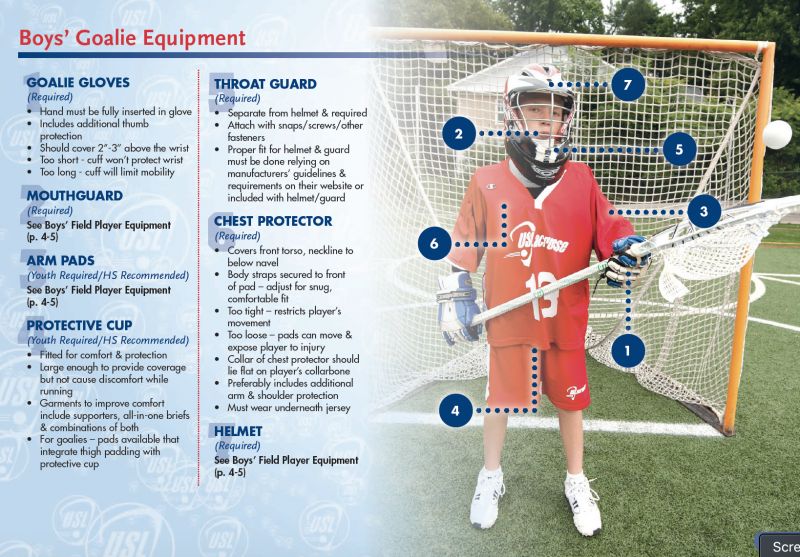
An open goal lacrosse setup is only as effective as the drills you do with it. Having a strategic practice plan tailored to your skill level and training goals is key to success.
For beginners, focus on shooting mechanics and stick handling. Set up cones for dodging and weaving footwork drills. Perform overhand shots from different angles and distances to dial in accuracy. As skills improve, work on quicker releases and shots after catches.
Advancing players can add passing and situational drills. Work on hitting precise spots on the goal with lead passes to receivers. Mimic game situations like fast breaks, man up opportunities, and end-of-quarter shots. Change shooting positions frequently to keep players adaptable.
Challenge veteran players with shooting on the run techniques. Practice skipping shots under pressure for quick release after fakes. Work on shot placement and ball rotation to beat goalies. Run sprints between shots to build conditioning.
Tailor drills to players’ positions for maximum training benefit. Middies work on fakes and roll dodges into open looks. Attackmen perfect quick stick passes and screens. Defenders hone stick checking and body positioning.
Regularly mix up routines to prevent stagnation. Vary shot locations, situational scenarios, and skill focuses. Maintain intensity and active rest cycles to maximize training time. Record sessions to review and identify area for improvement.
With a properly equipped open goal, strategic drills, and consistent practice, players can achieve new levels of lacrosse excellence. Follow fundamental training principles for steady skills progression.
Goalie Training With Open Goal Lacrosse Equipment

Open goal lacrosse setups provide goalies an excellent training tool for improving reaction time, positioning, and technique.
Work on initial shot tracking by having shooters vary rebounder placement. React to shots from different angles to practice quick lateral movements. Have players purposefully aim for tough bounce shots to test reflexes.
Dial in positioning relative to the goal by adjusting your setup routine. Start in different stances like square, angled, or staggered. Alternate foot placements to find optimal leverage and range.
Practice recovery technique after saves by blocking or redirecting shots to ideal areas. Use stick placement and body rotation to maintain control of rebounds.
Improve outlet passing accuracy by starting clear attempts from live rebounds. Grab saves cleanly and transition to downfield passes.
Challenge reaction time with behind-the-back and no-stick shots. Read shooters’ motions while tracking balls peripherally. Use save selections like block, redirect, catch, and deflect for game scenarios.
Increase shot velocity by attempting more difficult saves. Charge out farther from the crease and attempt sinking saves on knees. Have shooters vary placement and speed.
Mimic game intensity by facing waves of continuous rapid-fire shots. Cycle through multiple shooters with limited rest between shots to build stamina.
Record practice sessions to analyze performance. Assess areas for improvement like rebound control, outlet passing, recovery time, and technique consistency.
With strategic open goal training, goalies can level up skills dramatically. Test abilities with challenging drills to take game performances to the next level.
Fun Games to Play Using Your Open Goal Net and Rebounder
An open goal setup presents opportunities for exciting shooting games to add fun and competition to practice. Testing skills in game formats builds technique while keeping players engaged.
Work on shot accuracy with traditional games like HORSE. Make players take shots from increasingly difficult spots until someone spells out the full word.
Up the intensity with rapid fire elimination games. See who can last as players take shots against each other in head-to-head matchups.
Practice off-ball movement by incorporating passing contests like keep away. Work together to possess the ball against defenders.
Test shot speed and power with a radar gun. Challenge players to best personal top speeds.
Work on rebounding and outlets with clear possession games. Battle to control the ball after a shot and clear over midfield.
Emphasize defensive positioning with one-on-one denial contests. Work to force opponents into tougher shooting angles and situations.
Increase shooting volumes with designated shot count games. See who can reach set totals first as you move around the goal.
Add physical conditioning by incorporating sprints and agility drills between shots. First to 10 goals after completing a ladder drill wins!
Infuse fun into drills by gamifying training. The competitive elements keep players motivated while developing skills.
Care and Maintenance for Your Open Goal Lacrosse Net
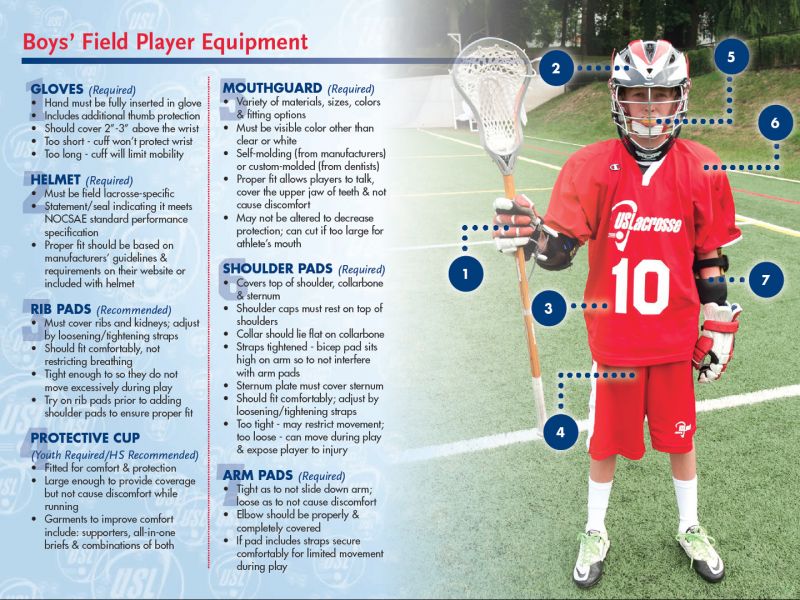
Regular care and maintenance keeps your open goal net performing optimally for seasons to come. Follow proper techniques to get the most life from your lacrosse equipment investment.
Inspect netting and frame components before and after each use. Tighten any loose fasteners or hardware. Look for small holes, tears, fraying, and damaged sections.
Wash netting periodically with a gentle detergent and water solution using a soft brush. Avoid harsh cleaners. Let components air dry completely before reinstalling.
Check net tension and rebounder connections regularly. Adjust as needed to maintain proper tautness and responsiveness. Carry ratchet tools to fine tune tension.
Take down goals after sessions and store safely when not in use. Fold netting neatly to prevent tangles and damage. Cover frames to protect from weathering.
Consider off-season deep cleaning for heavily used equipment. Disassemble components and scrub away built up dirt and mildew that impact performance.
Repair minor net holes immediately by knotting the broken strands together. Use manufacturer recommended adhesive patches for larger holes or contact them for re-netting services.
Replace deteriorated or defective components like straps, bolts, and bungee cords to avoid injuries and dysfunction.
Storing equipment properly over winter helps gears survive extreme weather swings. Clean thoroughly and keep in a protected, dry area.
With proper care and maintenance, an open goal lacrosse setup can deliver years of reliable performance. Consistent inspections and service preserve quality.
Pros and Cons of Different Open Goal Lacrosse Models
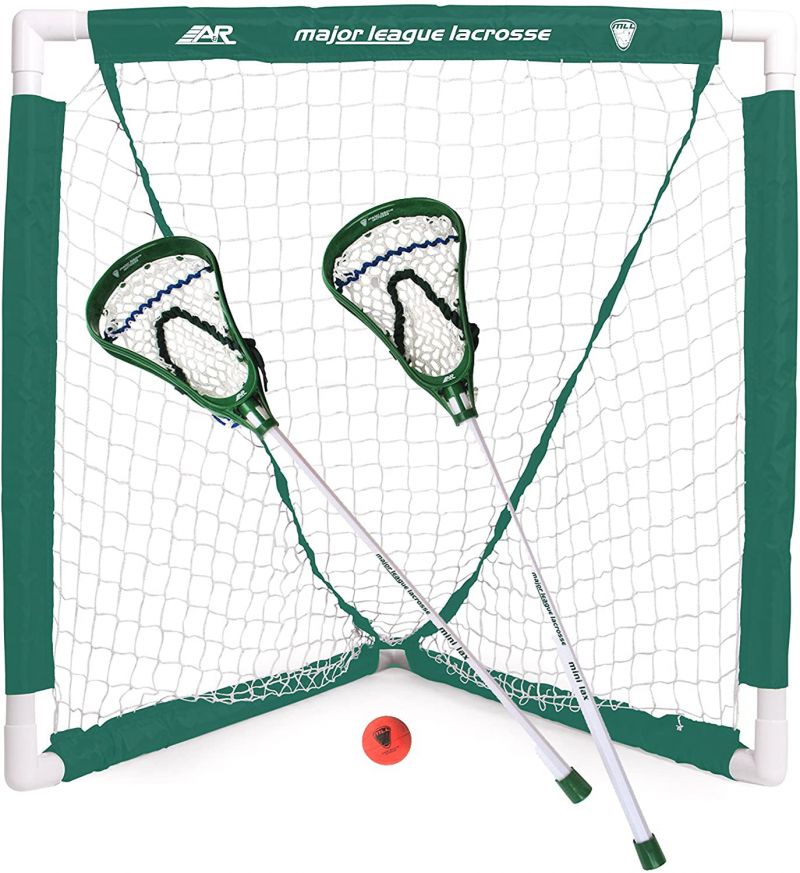
When selecting open goal lacrosse equipment, consider the pros and cons of different goal types and brands to choose the optimal setup.
Collapsible popup goals offer easy portability and storage, but lack the durability of heavy stationary models. Great for recreation, but not ideal for hardcore training.
Full stationary open goals provide unmatched stability for intense drills. But permanent in-ground sleeve installation can be complicated and may not suit renters.
Portable wheels kits add mobilization to stationary goals. However, frequent relocation and anchoring required can be inconvenient compared to true popup frames.
Budget goals keep costs down, but cheaper materials may sag over time requiring more maintenance. Pricier models offer better longevity.
Larger goal openings like 6’x6’ suit all levels. Narrower widths save space, but limit shot angles and may develop bad habits.
Vented net designs prevent wind tip-overs, but reduce ball rebound. Solid netting gives better rebounds and durability if properly anchored.
Rebounder attachments expand training capabilities. But improperly tuned bungee tension can hinder rebounds.
Brand reputation matters, as major manufactures like Guardian and Gladiator offer better quality control than generic goals.
Research options thoroughly, factoring in skill level, training space, budget, and portability needs. Select equipment that aligns with your goals.
Customizing Your Open Goal With Accessories and Upgrades
Beyond the basic goal frame and net, customizable accessories can optimize your open goal lacrosse setup.
Add ball catch nets behind the frame to snag wide shots and keep balls contained. Hang side rebounders at angles to deflect stray balls back into play.
Mark shooting lanes and boundaries with paint or tape lines. Define shooting areas for drills and games.
Install LED goal lights for improved visibility during low light sessions. Some models sync with shot sensors for cool lighting effects on goals.
Equip the goal with shot tracking sensors or a radar gun for quantifiable feedback on shot speed and location. Great for dialing in mechanics.
Upgrade to a training rebounder with adjustable bungee placements to customize ball return placement. Models with multiple rebound surfaces further enhance training capabilities.
Add a barricade screen target within the goal for shooting accuracy challenges and goalie reaction drills.
Outfit the goal frame with brackets to mount defensive dummy figures. Use them for contact drills and dodging practice.
Consider a weather-resistant cover to protect the netting between uses and extend equipment lifespan.
Accessorize your open goal training system over time to amplify capabilities. The right additions can level up your practice sessions.
How to Take Down and Store Your Open Goal After Use

Proper takedown and storage between uses helps maximize your open goal lacrosse equipment’s lifespan.
Start by relieving net tension using the adjustment straps and ratchet. Remove any rebounder attachments. Coil bungee cords neatly to prevent tangles.
Detach netting fasteners from the goal frame. Unclip carabiners or untie straps slowly to avoid snags. Gather and fold the net neatly off the playing surface.
Disassemble goal frame components. Remove bolts systematically and lay parts in order. Use care not to bend or scratch tubes when handling.
Wipe down frame parts with a damp cloth to remove dirt, grass, and moisture from gameplay. Allow tubes and netting to dry fully before packing away.Carefully load components into storage bags and protective casings. Wrap netting and poles separately with padding to prevent rubbing damage.
Find a secure, dry storage space like a garage or shed. Elevate goals off concrete floors to prevent mildew and corrosion issues.
Consider suspending netting from rafters or hooks to alleviate strain on the net. Just ensure it’s fully accessible for future use.
Use caution transporting assembled goals. Remove nets and secure parts properly to avoid shifting during transit.
With methodical takedown and organized storage habits, your open goal gear will deliver durable performance season after season.
Troubleshooting Common Open Goal Setup and Use Issues
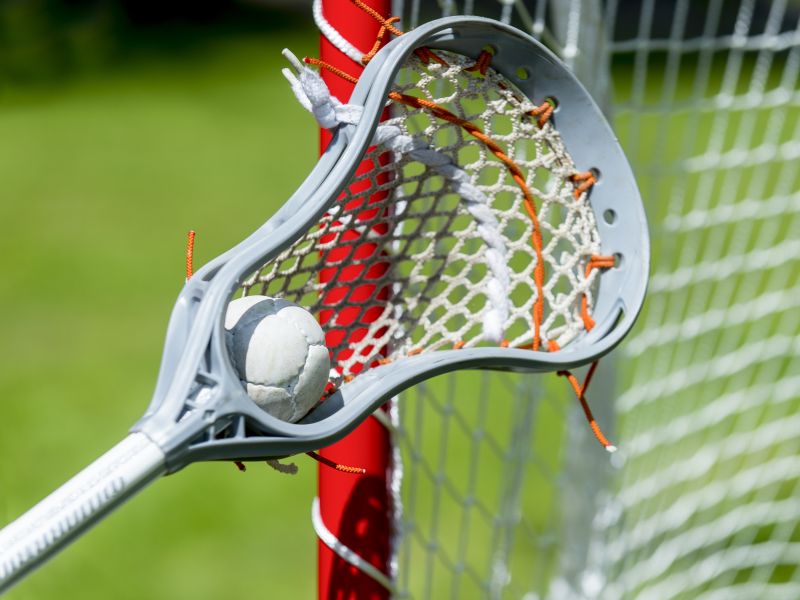
Even quality open goal equipment can occasionally encounter problems. Learn to diagnose and address common challenges for smooth training.
Sagging net over time indicates loss of tension. Systematically tighten all connection points and examine for loose or damaged fasteners. Replace worn parts like bungees.
Inconsistent ball rebounds point to improper net tautness. Adjust tension straps gradually until achieving lively yet controlled returns.
Net holes typically occur from wear, weathering, and rodent damage. Patch small holes with repair tape. Larger holes often warrant professional re-netting services.
Clattering pipes result when frame joints become loose. Re-tighten bolts and brackets. Shim with washers if connections remain wobbly.
Frames shifting or tipping over generally stem from inadequate anchoring on uneven surfaces. Improve stabilization with more ground spikes or weight bags.
Net fibers fraying or pulling out is a sign of excessive wear. Limit direct pole shots and use softer practice balls. Replace heavily damaged netting.
Bowed frame poles or torn connector brackets indicate structural stress. Check weight limits and reinforce goals rated for competitive play.
By recognizing common issues early and making prompt fixes, you can keep your open goal in top playing condition for maximum training utility.
Open Goal Lacrosse Training vs Other Equipment Options
Open goals offer excellent lacrosse training capabilities for all skill levels. But various other equipment options exist to consider as well.
Full-sized stationary goals are most realistic for live gameplay simulation. But portability is limited and permanent installation can be complicated.
Smaller popup goals provide portable convenience at the expense of shot realism. Narrow openings play differently than regulation goals.
Rebound nets attach to existing structures for solo shooting. But responsiveness and ball return control are limited compared to lacrosse-specific rebounders.
Wall ball surfaces develop stick skills but lack a net for complete shooting practice. Rebounds can be unpredictable from hard surfaces.
Shooting tarps allow practicing overhand mechanic and accuracy. However, ground balls and situational moves are difficult to simulate.
Home shooting cages control balls efficiently in tight spaces. Yet confined quarters restrict full shooting, dodging, and passing drills.
Mirrors help engrain proper form through self-analysis. But they don’t replace live repetition for building muscle memory.
Consider your specific needs and training limitations when selecting practice equipment. Open goals provide the versatility for well-rounded lacrosse skill development.
Is Open Goal Lacrosse Training Right For Your Needs?

With the variety of lacrosse training tools available, determining if an open goal setup is right for you depends on several factors.
Open goals excel for all-around skills training. The adjustable rebounder and full-sized net allow practicing shots, catches, ground balls situational moves, and conditioning drills.
The portability makes them great for home use, especially with limited space. Easily move for driveway or backyard sessions. Lower cost than permanent goals.
Open goals suit developing fundamental skills for beginners before advancing to team play. The accessible practice helps build confidence.
The solo workout capabilities are ideal for players without regular access to on-field practice and coaching. Get quality reps from home.
Advanced players can sharpen game skills with challenging reaction drills. Mimic game speed and pressure.
The lack of defensive pressure and full team dynamics limits tactical development. Use in conjunction with regular team practices.
For well-rounded lacrosse training without regular field time, open goals deliver on versatility and performance. Determine if the benefits match your skills and access needs.
Is Open Goal Lacrosse Right for Your Training Needs?
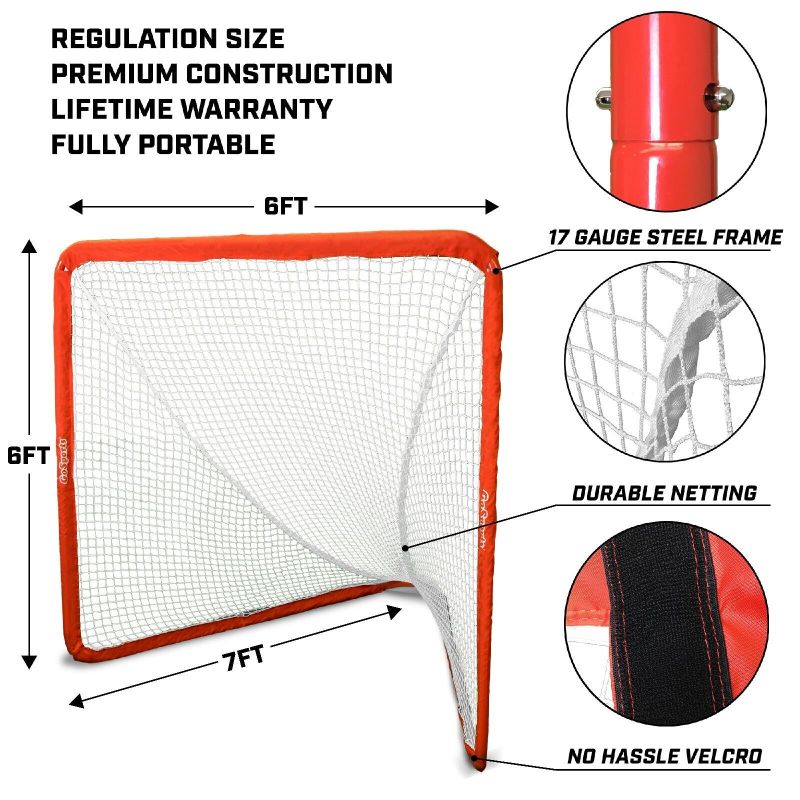
Open goal lacrosse equipment provides players an excellent training tool for honing skills and game performance. But is an open goal setup right for your specific needs?
For beginners, open goals allow developing proper shooting mechanics and fundamentals through quality repetition. The instant feedback helps build confidence before joining team practices.
Intermediate players can sharpen their accuracy, power, and quick stick skills. The rebounder mimics live action for realistic practice. Games keep sessions fun and engaging.
Advanced athletes benefit from challenging reaction and situational drills. Open goals make it easy to simulate game speed and pressure right from home.
Open goals suit players lacking regular access to full field practice facilities. Get quality training reps from the driveway or backyard as needed.
Equipment portability and ease of use supports solo training when team practices aren’t possible. Schedule sessions on your own schedule.
However, open goals can’t fully replace live gameplay for tactical development. Use as a supplement to team practices for well-rounded skill building.
Consider your experience level, training goals, practice access, and schedule availability. For most players, open goals provide versatile, affordable skill development capabilities.